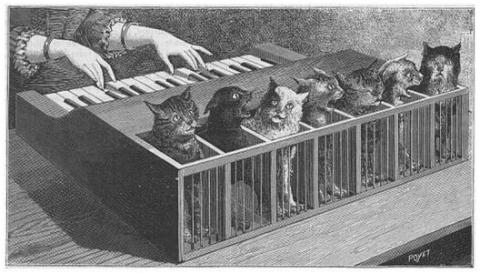Hugh Greene, also known as Ferdinand Brooks, was a victim of anti-Catholic persecution during the English Civil War. Greene was born in London to Anglican parents but converted to Catholicism after his graduation from Cambridge. After studying in France, Greene became a parish priest in Dorset.
In 1642, Charles I banished all Catholic priests from England. Greene complied with the king’s order but was held up and missed the deadline by several days, and was arrested trying to board a ship in Lyme Regis.
Greene was imprisoned for several months, committed to trial on charges of high treason and sent for execution. The sentence was carried out in Dorchester in August 1642. According to the written testimony of an eyewitness, Elizabeth Willoughby, Greene was hanged to the point of unconsciousness, then messily quartered:
“The man that was to quarter him was a timorous, unskilful man, by trade a barber, and his name was Barefoot… he was so long dismembering him that [Greene] came to his perfect senses and sat upright and took Barefoot by the hand… then did this butcher cut his belly on both sides… Whilst [Greene] was calling upon Jesus, the butcher did pull a piece of his liver out instead of his heart, tumbling his guts out every way to see if his heart were not amongst them…”
This barbarous ordeal went on for more than a half-hour, with Greene either praying devoutly or screaming in agony. According to Willoughby, Greene only expired after his throat was cut and his head was hacked off with a cleaver. His heart was eventually removed and thrown into a fire, before it was snatched up and stolen by a local woman.
As for the priest’s severed head:
“An ungodly multitude, from ten o’clock in the morning till four in the afternoon, stayed on the hill and sported themselves at football with his head [then] put sticks in his eyes, ears, nose and mouth and buried it near to the body.”
Source: Letter from Elizabeth Willoughby, Dorchester, June 20th 1643. Content on this page is © Alpha History 2019-23. Content may not be republished without our express permission. For more information please refer to our Terms of Use or contact Alpha History.

